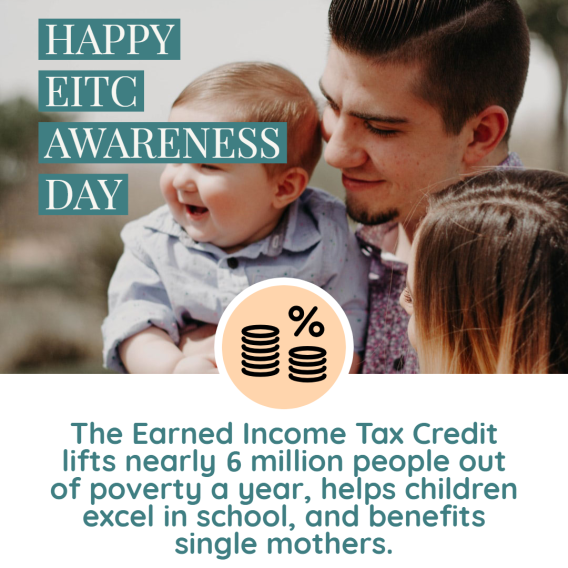By Will Wong, 2018 Get It Back Campaign Intern
What is disability?
You can’t tell whether someone has a disability just by looking at them.
Disability includes a broad range of experiences. Blindness, deafness, and mobility impairment commonly come to mind when we think about the term “disability.” However, disability includes less visible conditions like chronic fatigue, intellectual disability, and mental illness. Some people who experience disability don’t identify with having a disability and may not be officially diagnosed by a doctor.
What defines disability is a failure of the environment to meet someone’s needs. For example, stairs may prevent a wheelchair user from entering a restaurant, while overly complex language might prevent someone with an intellectual disability from applying for a job. People with disabilities need accommodations to fully participate in their communities.
Why should you reach out to people with disabilities?
Nearly one quarter of Americans experience disability sometime during their life. People with disabilities are often also marginalized in other ways. For example, being a person of color, LGBTQ+, elderly, or homeless brings stresses that make disability more likely to occur. This means that people with disabilities also tend to be low-income. Half of people with disabilities have household incomes under $35,000.
Tax credits can help, but people with disabilities are at risk of missing out. Managing disability benefits is complicated, and many may incorrectly assume that claiming tax credits would make them ineligible for benefits. The Earned Income Tax Credit, Child Tax Credit, and other tax credits must be claimed by filing a tax return. Free tax preparation can make a difference in the lives of people with disabilities.
How do I communicate respectfully toward people with disabilities?
There are no magic words or actions to express when it comes to people with disabilities. Be courteous and follow the lead of the individual. Respect what language they use for themselves, even if it’s not “correct.” If they don’t describe themselves as having a disability, don’t assign them that label.
More importantly, be attentive to people’s needs. Many people aren’t comfortable requesting accommodations without invitation. If someone seems like they’re having trouble fully participating in a conversation or activity, ask them how you can help. Ask in a straightforward manner without treating them like a child. Be prepared for some to decline help—don’t continue to pressure someone after a “no.” If someone is having trouble answering a question right away, allow for extra processing time and consider asking in a different way.
When offering tax services, understand that people with disabilities might distrust the government, social services, and “the system.” Like many marginalized people, they may have experienced professionals that were cruel, condescending, and unwilling or unable to meet their needs. Build trust by providing a useful service in a respectful way. Share your professional knowledge about taxes, while respecting people as the experts on their own lives and situations. Communicate with staff and volunteers so everyone has a shared understanding of how to respect people with disabilities.
How do I reach out to people with disabilities?
Start with disability services agencies or other organizations that specifically work with this population. Centers for Independent Living, for example, provide community-based, cross-disability services. You can also connect with other social services organizations, like housing or food assistance, which people with disabilities disproportionately rely on. Contacting self-advocacy groups run by and for people with disabilities (like Self-Advocates Becoming Empowered), is a way to reach those who might be more skeptical of social services.
Reaching people with non-identified disabilities takes different strategies since they are less likely to connect with disability-focused organizations. Reach out to community leaders—some are more likely to know about community members’ needs, especially those that don’t consider themselves disabled. Consider faith leaders, organizers, teachers, or people involved in planning community events.
Communities of color and other marginalized communities often have networks of care, where they meet each other’s needs on an informal basis. For example, immigrant parents who know each other from a community center may also informally do childcare.
Relationship-building is key. Be persistent and go the extra mile to make it easy for people to partner with you. Ask yourself how this partnership can benefit them as well. Building trust takes time, so be patient.
What should I include in my messaging?
Focus on presenting the practical benefits of free tax filing in a simple way. Use clear language. You can use an online grade level checker tool to see how accessible your writing is, but having someone with a cognitive disability read over messaging is even better. Tax credits are additional money, and anyone should be able to grasp that in a quick glance. People with disabilities may assume they aren’t eligible, so make sure to address misconceptions.
Emphasize how you can meet the needs of people with disabilities. Include accommodations or specialized services you offer and provide a point of contact for further requests. There are arguments for and against using words like “disability” and “accommodations” in your messaging. People who don’t have identified disabilities might assume you’ll only help those with officially diagnosed disabilities. People who do identify as having a disability might think they won’t get accommodations if it’s not explicitly stated.
Most importantly, address people with disabilities as equal members of the community. Working with people with disabilities is about solidarity, not charity.









